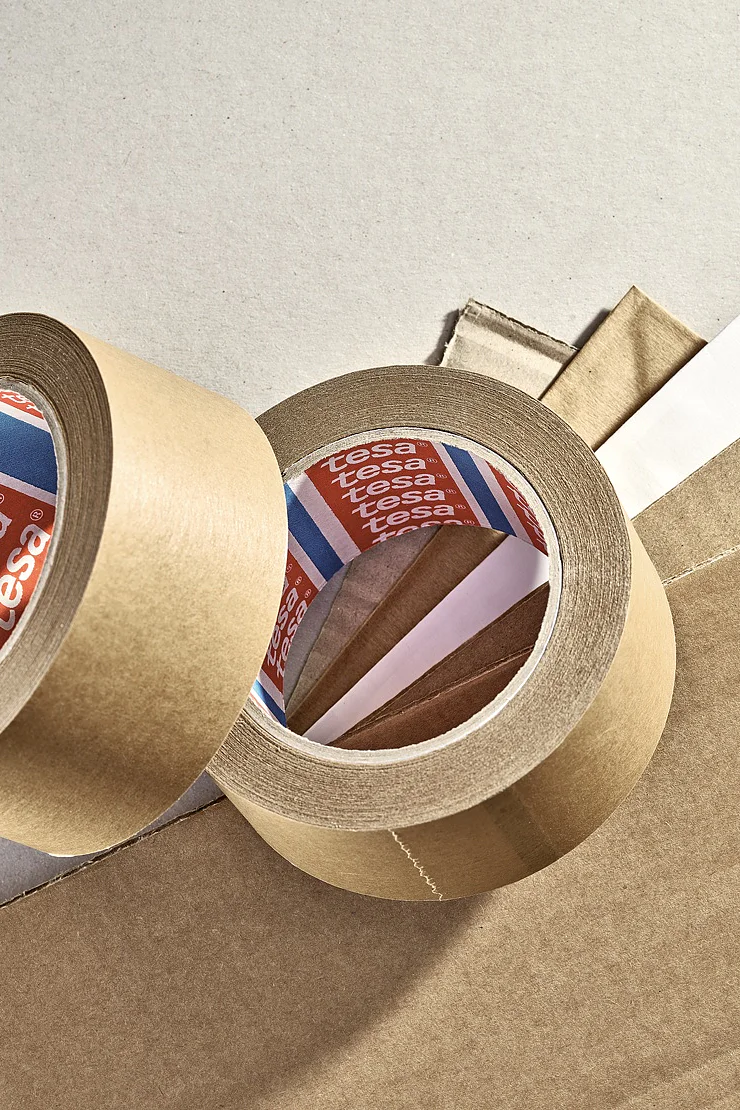
tesa® 4903 recyclable packaging tape made from responsible sources

If you received a sample box and want to learn more or start a free trial, tell us about yourself and we’ll be in touch.
Let us describe what we understand by the term "degradable": Biodegradable plastics are plastics that decompose under certain conditions, leaving nothing but CO₂ and water behind when they break down. Both are defined in standards. Bio-based plastics can be biodegradable, but often are not. Conversely, biodegradable plastics are not necessarily also bio-based. Our more sustainable packaging tapes are not considered biodegradable.
Let us describe what we mean by the term "recycable": A characteristic of a product, package or associated component that can be removed from the waste stream through available processes and programs and collected, processed and reused in the form of raw materials or products. Only pre-consumer and post-consumer materials are considered recycled content.
Our more sustainable packaging tapes are recycling-friendly, not yet fully recycable. Recycling-friendly means they can be disposed with the cardboard and led into the recycling stream for paper, but within that our adhesives are not endangering the recycling process as they are pulled out of the recycling stream.
Compostability describes the characteristic of a product, packaging or associated component that allows it to biodegrade, generating a relatively homogeneous and stable humus-like substance. Our more sustainable packaging tapes are not considered compostable.
The Forest Stewardship Council® is an international nongovernmental organization that promotes environmentally appropriate, socially beneficial, and economically viable management of the world’s forests. FSC® as well as Forest Stewardship Council® are registered trademarks. An organization may apply an FSC® label on FSC-certified products. The type of FSC label shall always correspond to the FSC claim made on sales documents. Only FSC products that are eligible for FSC labelling may be promoted with the FSC trademarks.
Types of FSC on-product labels: FSC 100%, FSC Mix and FSC recycled.
Bio-based plastics are plastics partly produced from biomass. The raw materials are usually provided by plants rich in starch and cellulose such as wood, corn, wheat, sugar cane, vegetable oil, algae or biological waste from households, animal husbandry and food production. Bio-based materials can be procured continuously. This means that use and consumption cannot exceed nature’s ability to reproduce these types of materials. The term "renewable" is slightly different to "bio-based": The term renewable refers to resources of energy, food and stock that are available continuously as nature is able to reproduce them. The term renewable is contrasted with those resources that are based on fossils fuel and thus only possess limited stocks.
DIN CERTCO is the certification body of TÜV Rheinland Group and is the certification body for the issuance of the DIN-Marks and further certification marks.
INGEDE Method 12 is a test method of the International Association of the Deinking Industry for the recyclability of printed products and - to our knowledge - the only standard available to determine the recycling behavior of PSAs (e.g. labels and stickers). The main goal of INGEDE activities/methods is to safeguard and improve paper/cardboard recyclability.
The INGEDE Method 12 provides an assessment about the removability of adhesive applications during the paper recycling process. During the paper recycling process, adhesive applications disintegrate during pulping to stickies (also known as adhesive residues). The more adhesive residues are collected, the better for the paper recycling process. This method provides a removability score between -20 and 100 points depending on how good the adhesive residues can be removed.
Polylactic acid (PLA) is derived from plant-based corn starch, so it is a bio-based material, and has been used in the production of tesa® 60400 Bio & Strong since 2021. The bioplastic can be used as a film backing, while the adhesive is based on biological raw materials such as natural rubber and tree resin.